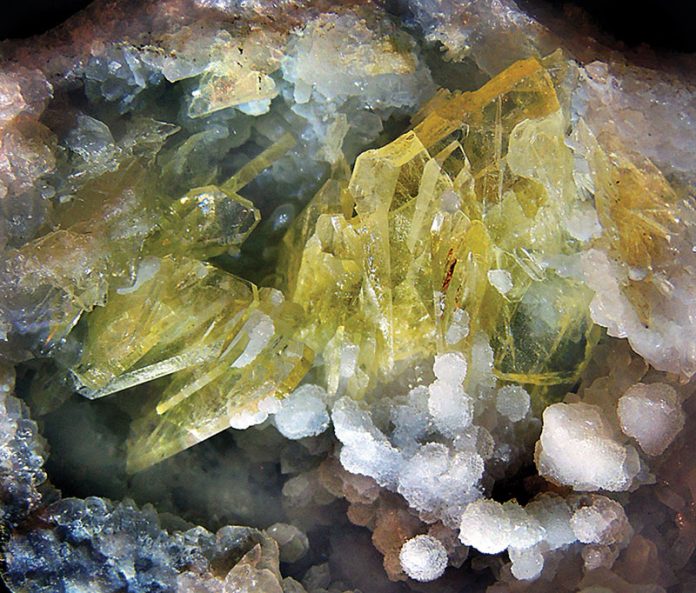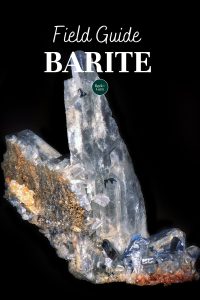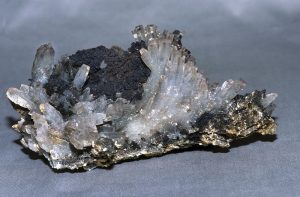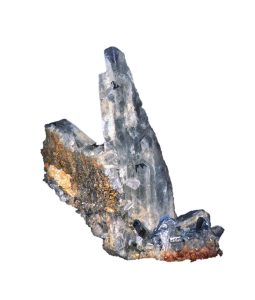
Barite or baryte (BaSO4) is a sulfate mineral that gets its name from the Greek word “barys” which means “heavy.” Barite’s claim to fame is its high specific gravity of 4.5, which ranks it among the heaviest nonmetallic minerals. Said another way, barite weighs 4.5 times as much as an equal volume of water. This heaviness or density accounts for its usefulness and economic importance.
About Barite

Barite has a Mohs hardness of 2.5 to 3.5 and crystallizes in the orthorhombic system. Barite is usually pale-colored and can be clear, white, yellow, blue, green or red. Its streak is white. Barite’s luster can be vitreous or pearl-like. Cleavage is prismatic.
Barite most often occurs in sedimentary rocks such as limestone and dolostone and in sediments that have weathered out of limestone. Barite can be found around hot springs and in nodules in clay. It can also occur in sandstone filling the voids between the sand grains and can form a rose shape, often stained with iron oxides, that’s popular with mineral collectors.

Richard Gross
Barite Uses
Barite is used in paints and as an agent to add weight to rubber, cloth and paper. It is added to the paper used to produce playing cards to make them easier to deal. Barite is added to rubber to increase the life of the rubber product as the product becomes waterproof and its durability increases. Barite is also used to color fireworks green.
Barite contains barium and is used in the field of medicine in the form of barium compounds to block x-rays in various diagnostic testing.

Richard Gross
The major use (over 90%) for barite is its use in drilling muds. The barite mud carries the busted rock pieces produced by the drill and transports them to the surface and at the same time keeps the drill bit from overheating.
While barite is more common as a stone, it is used for metaphysical purposes to encourage the mind-body connection for self-healing and helps to dispel negative thinking.
Where to Find Barite
While most barite is mined in China and India, deposits occur in the Yukon, Nova Scotia and New Foundland in Canada as well as in Hermosillo, Pueblo, Monterrey and Durango in Mexico. In the United States, large barite deposits occur in Georgia, Missouri, Nevada and Tennessee.
This story about barite previously appeared in Rock & Gem magazine. Click here to subscribe. Story by Richard Gross.














